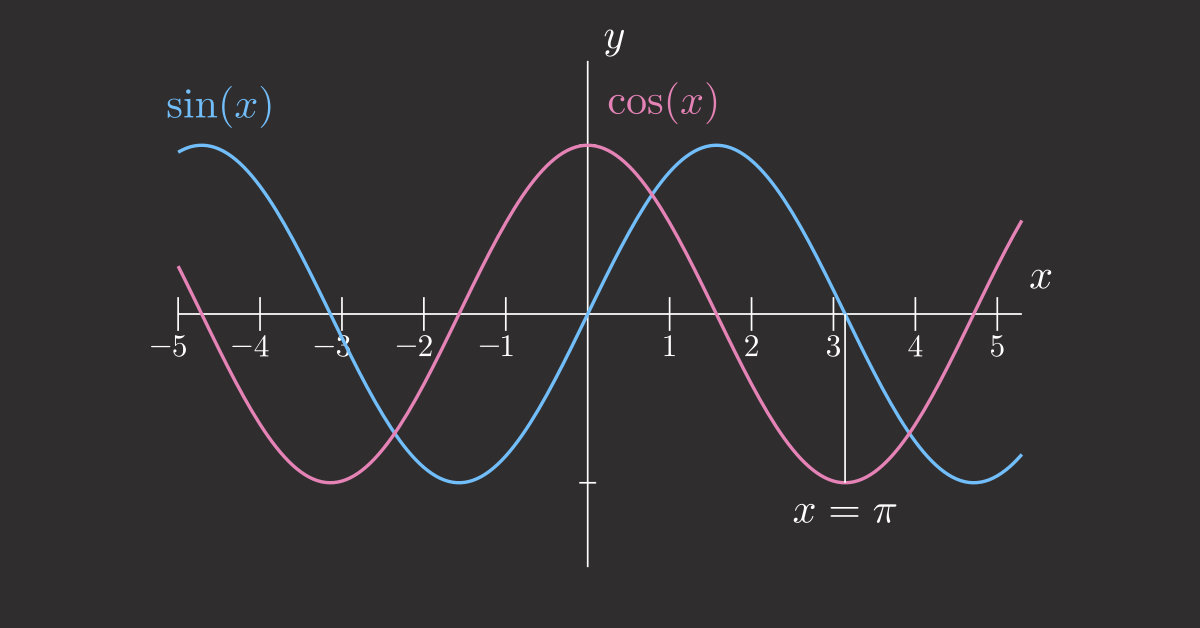Table of Contents
- Introduction
- Dataset Generation
- Simple Regex: Basic Pattern Extraction
- pregex: Build Readable Patterns
- pyparsing: Parse Structured Ticket Headers
- Conclusion
Introduction
Imagine you’re analyzing customer support tickets to extract contact information and error details. Tickets contain customer messages with email addresses in various formats, phone numbers with inconsistent formatting (some (555) 123-4567, others 555-123-4567).
| ticket_id | message |
|---|---|
| 0 | Contact me at nichole70@kemp.com or (798)034-325 to resolve this issue. |
| 1 | You can reach me by phone (970-295-1452) or email (russellbrandon@simon-rogers.org) anytime. |
| 2 | My contact details: ehamilton@silva.io and 242 844 7293. |
| 3 | Feel free to call 901.794.1337 or email ogarcia@howell-chavez.net for assistance. |
How do you extract the email addresses and phone numbers from the tickets?
This article shows three approaches to text pattern matching: regex, pregex, and pyparsing.
Key Takeaways
Here’s what you’ll learn:
- Understand when regex patterns are sufficient and when they fall short
- Write maintainable text extraction code using pregex’s readable components
- Parse structured text with inconsistent formatting using pyparsing
💻 Get the Code: The complete source code and Jupyter notebook for this tutorial are available on GitHub. Clone it to follow along!
Dataset Generation
Let’s create sample datasets that will be used throughout the article. We’ll generate customer support ticket data using the Faker library:
Install Faker:
pip install faker
First, let’s generate customer support tickets with simple contact information:
from faker import Faker
import csv
import pandas as pd
import random
fake = Faker()
Faker.seed(40)
# Define phone patterns
phone_patterns = ["(###)###-####", "###-###-####", "### ### ####", "###.###.####"]
# Define email TLDs
email_tlds = [".com", ".org", ".io", ".net"]
# Generate phone numbers and emails
phones = []
emails = []
for i in range(4):
# Generate phone with specific pattern
phone = fake.numerify(text=phone_patterns[i])
phones.append(phone)
# Generate email with specific TLD
email = fake.user_name() + "@" + fake.domain_word() + email_tlds[i]
emails.append(email)
# Define sentence structures
sentence_structures = [
lambda p, e: f"Contact me at {e} or {p} to resolve this issue.",
lambda p, e: f"You can reach me by phone ({p}) or email ({e}) anytime.",
lambda p, e: f"My contact details: {e} and {p}.",
lambda p, e: f"Feel free to call {p} or email {e} for assistance."
]
# Create CSV with 4 rows
with open("data/tickets.csv", "w", newline="") as f:
writer = csv.writer(f)
writer.writerow(["ticket_id", "message"])
for i in range(4):
message = sentence_structures[i](phones[i], emails[i])
writer.writerow([i, message])
Set the display option to show the full width of the columns:
pd.set_option("display.max_colwidth", None)
Load and preview the tickets dataset:
df_tickets = pd.read_csv("data/tickets.csv")
df_tickets.head()
| ticket_id | message |
|---|---|
| 0 | Contact me at nichole70@kemp.com or (798)034-325 to resolve this issue. |
| 1 | You can reach me by phone (970-295-1452) or email (russellbrandon@simon-rogers.org) anytime. |
| 2 | My contact details: ehamilton@silva.io and 242 844 7293. |
| 3 | Feel free to call 901.794.1337 or email ogarcia@howell-chavez.net for assistance. |
Simple Regex: Basic Pattern Extraction
Regular expressions (regex) are patterns that match text based on rules. They excel at finding structured data like emails, phone numbers, and dates in unstructured text.
Extract Email Addresses
Start with a simple pattern that matches basic email formats, including:
- Username:
[a-z]+– One or more lowercase letters (e.g.maria95) - Separator:
@– Literal@symbol - Domain:
[a-z]+– One or more lowercase letters (e.g.gmailoroutlook) - Dot:
\.– Literal dot (escaped) - Extension:
(?:org|net|com|io)– Match specific extensions (e.g..com,.org,.io,.net)
import re
# Match basic email format: letters@domain.extension
email_pattern = r'[a-z]+@[a-z]+\.(?:org|net|com|io)'
df_tickets['emails'] = df_tickets['message'].apply(
lambda x: re.findall(email_pattern, x)
)
df_tickets[['message', 'emails']].head()
| message | emails |
|---|---|
| 0 | Contact me at nichole70@kemp.com or (798)034-325 to resolve this issue. |
| 1 | You can reach me by phone (970-295-1452) or email (russellbrandon@simon-rogers.org) anytime. |
| 2 | My contact details: ehamilton@silva.io and 242 844 7293. |
| 3 | Feel free to call 901.794.1337 or email ogarcia@howell-chavez.net for assistance. |
This pattern works for simple emails but misses variations with:
- Other characters in the username such as numbers, dots, underscores, plus signs, or hyphens
- Other characters in the domain such as numbers, dots, or hyphens
- Other extensions that are not
.com,.org,.io, or.net
Let’s expand the pattern to handle more formats:
# Handle emails with numbers, dots, underscores, hyphens, plus signs
improved_email = r'[a-zA-Z0-9._%+-]+@[a-zA-Z0-9.-]+\.[a-zA-Z]{2,}'
df_tickets['emails_improved'] = df_tickets['message'].apply(
lambda x: re.findall(improved_email, x)
)
df_tickets[['message', 'emails_improved']].head()
| message | emails_improved |
|---|---|
| 0 | Contact me at nichole70@kemp.com or (798)034-325 to resolve this issue. |
| 1 | You can reach me by phone (970-295-1452) or email (russellbrandon@simon-rogers.org) anytime. |
| 2 | My contact details: ehamilton@silva.io and 242 844 7293. |
| 3 | Feel free to call 901.794.1337 or email ogarcia@howell-chavez.net for assistance. |
The improved pattern successfully extracts all emails from the tickets! Let’s move on to extracting phone numbers.
Extract Phone Numbers
Common phone number formats are:
(XXX)XXX-XXXX– With parenthesesXXX-XXX-XXXX– Without parenthesesXXX XXX XXXX– With spacesXXX.XXX.XXXX– With dots
To handle all four phone formats, we can use the following pattern:
\(?– Optional opening parenthesis\d{3}– Exactly 3 digits (area code)[-.\s]?– Optional hyphen, dot, or space\)?– Optional closing parenthesis\d{3}– Exactly 3 digits (prefix)[-.\s]?– Optional hyphen, dot, or space\d{3,4}– Exactly 3 or 4 digits
# Define phone pattern
phone_pattern = r'\(?\d{3}\)?[-.\s]?\d{3}[-.\s]\d{4}'
df_tickets['phones'] = df_tickets['message'].apply(
lambda x: re.findall(phone_pattern, x)
)
df_tickets[['message', 'phones']].head()
| message | phones |
|---|---|
| 0 | Contact me at hfuentes@anderson.com or (798)034-3254 to resolve this issue. |
| 1 | You can reach me by phone (702-951-4528) or email (russellbrandon@simon-rogers.org) anytime. |
| 2 | My contact details: ehamilton@silva.io and 242 844 7293. |
| 3 | Feel free to call 901.794.1337 or email ogarcia@howell-chavez.net for assistance. |
Awesome! We are able to extract all phone numbers from the tickets!
While these patterns works, they are difficult to understand and modify for someone who is not familiar with regex.
📖 Readable code reduces maintenance burden and improves team productivity. Check out Production-Ready Data Science for detailed guidance on writing production-quality code.
In the next section, we will use pregex to build more readable patterns.
pregex: Build Readable Patterns
pregex is a Python library that lets you build regex patterns using readable Python syntax instead of regex symbols. It breaks complex patterns into self-documenting components that clearly express validation logic.
Install pregex:
pip install pregex
Extract Email Addresses
Let’s extract emails using pregex’s readable components.
In the code, we will use the following components:
- Username:
OneOrMore(AnyButWhitespace())– Any letters but whitespace (maria95) - Separator:
@– Literal @ symbol - Domain name:
OneOrMore(AnyButWhitespace())– Any letters but whitespace (gmailoroutlook) - Extension:
Either(".com", ".org", ".io", ".net")– Match specific extensions (.com,.org,.io,.net)
from pregex.core.classes import AnyButWhitespace
from pregex.core.quantifiers import OneOrMore
from pregex.core.operators import Either
username = OneOrMore(AnyButWhitespace())
at_symbol = "@"
domain_name = OneOrMore(AnyButWhitespace())
extension = Either(".com", ".org", ".io", ".net")
email_pattern = username + at_symbol + domain_name + extension
# Extract emails
df_tickets["emails_pregex"] = df_tickets["message"].apply(
lambda x: email_pattern.get_matches(x)
)
df_tickets[["message", "emails_pregex"]].head()
| message | emails_pregex | |
|---|---|---|
| 0 | Contact me at hfuentes@anderson.com or (798)034-3254 to resolve this issue. | [hfuentes@anderson.com] |
| 1 | You can reach me by phone (702-951-4528) or email (russellbrandon@simon-rogers.org) anytime. | [(russellbrandon@simon-rogers.org] |
| 2 | My contact details: ehamilton@silva.io and 242 844 7293. | [ehamilton@silva.io] |
| 3 | Feel free to call 901.794.1337 or email ogarcia@howell-chavez.net for assistance. | [ogarcia@howell-chavez.net] |
The output shows that we are able to extract the emails from the tickets!
pregex transforms pattern matching from symbol decoding into readable code. OneOrMore(username_chars) communicates intent more clearly than [a-zA-Z0-9._%+-]+, reducing the time teammates spend understanding and modifying validation logic.
Extract Phone Numbers
Now extract phone numbers with multiple components:
- First three digits:
Optional("(") + Exactly(AnyDigit(), 3) + Optional(")") - Separator:
Either(" ", "-", ".") - Second three digits:
Exactly(AnyDigit(), 3) - Last four digits:
Exactly(AnyDigit(), 4)
from pregex.core.classes import AnyDigit
from pregex.core.quantifiers import Optional, Exactly
from pregex.core.operators import Either
# Build phone pattern using pregex
first_three = Optional("(") + Exactly(AnyDigit(), 3) + Optional(")")
separator = Either(" ", "-", ".")
second_three = Exactly(AnyDigit(), 3)
last_four = Exactly(AnyDigit(), 4)
phone_pattern = first_three + Optional(separator) + second_three + separator + last_four
# Extract phone numbers
df_tickets['phones_pregex'] = df_tickets['message'].apply(
lambda x: phone_pattern.get_matches(x)
)
df_tickets[['message', 'phones_pregex']].head()
| message | phones_pregex | |
|---|---|---|
| 0 | Contact me at hfuentes@anderson.com or (798)034-3254 to resolve this issue. | [(798)034-3254] |
| 1 | You can reach me by phone (702-951-4528) or email (russellbrandon@simon-rogers.org) anytime. | [(702-951-4528] |
| 2 | My contact details: ehamilton@silva.io and 242 844 7293. | [242 844 7293] |
| 3 | Feel free to call 901.794.1337 or email ogarcia@howell-chavez.net for assistance. | [901.794.1337] |
If your system requires the raw regex pattern, you can get it with get_compiled_pattern():
print("Compiled email pattern:", email_pattern.get_compiled_pattern().pattern)
print("Compiled phone pattern:", phone_pattern.get_compiled_pattern().pattern)
Compiled email pattern: \S+@\S+(?:\.com|\.org|\.io|\.net)
Compiled phone pattern: \(?\d{3}\)?(?: |-|\.)?\d{3}(?: |-|\.)\d{4}
For more pregex examples including URLs and time patterns, see PRegEx: Write Human-Readable Regular Expressions in Python.
Parse Structured Ticket Headers
Now let’s tackle a more complex task: parsing structured ticket headers that contain multiple fields:
Ticket: 1000 | Priority: High | Assigned: John Doe # escalated
We will use Capture to extract just the values we need from each ticket:
from pregex.core.quantifiers import OneOrMore
from pregex.core.classes import AnyDigit, AnyLetter, AnyWhitespace
from pregex.core.groups import Capture
sample_ticket = "Ticket: 1000 | Priority: High | Assigned: John Doe # escalated"
# Define patterns with Capture to extract just the values
whitespace = AnyWhitespace()
ticket_id_pattern = "Ticket:" + whitespace + Capture(OneOrMore(AnyDigit()))
priority_pattern = "Priority:" + whitespace + Capture(OneOrMore(AnyLetter()))
name_pattern = (
"Assigned:"
+ whitespace
+ Capture(OneOrMore(AnyLetter()) + " " + OneOrMore(AnyLetter()))
)
# Define separator pattern (whitespace around pipe)
separator = whitespace + "|" + whitespace
# Combine all patterns with separators
ticket_pattern = (
ticket_id_pattern
+ separator
+ priority_pattern
+ separator
+ name_pattern
)
```text
Next, define a function to extract the ticket components from the captured components:
```python
def get_ticket_components(ticket_string, ticket_pattern):
"""Extract ticket components from a ticket string."""
try:
captures = ticket_pattern.get_captures(ticket_string)[0]
return pd.Series(
{
"ticket_id": captures[0],
"priority": captures[1],
"assigned": captures[2],
}
)
except IndexError:
return pd.Series(
{"ticket_id": None, "priority": None, "assigned": None}
)
Apply the function with the pattern defined above to the sample ticket.
components = get_ticket_components(sample_ticket, ticket_pattern)
print(components.to_dict())
{'ticket_id': '1000', 'priority': 'High', 'assigned': 'John Doe'}
This looks good! Let’s apply to ticket headers with inconsistent whitespace around the separators. Start by creating the dataset:
import pandas as pd
# Create tickets with embedded comments and variable whitespace
tickets = [
"Ticket: 1000 | Priority: High | Assigned: John Doe # escalated",
"Ticket: 1001 | Priority: Medium | Assigned: Maria Garcia # team lead",
"Ticket:1002| Priority:Low |Assigned:Alice Smith # non-urgent",
"Ticket: 1003 | Priority: High | Assigned: Bob Johnson # on-call"
]
df_tickets = pd.DataFrame({'ticket': tickets})
df_tickets.head()
| ticket |
|---|
| 0 |
| 1 |
| 2 |
| 3 |
# Extract individual components using the function
df_pregex = df_tickets.copy()
components_df = df_pregex["ticket"].apply(get_ticket_components, ticket_pattern=ticket_pattern)
df_pregex = df_pregex.assign(**components_df)
df_pregex[["ticket_id", "priority", "assigned"]].head()
| ticket_id | priority | assigned | |
|---|---|---|---|
| 0 | 1000 | High | John Doe |
| 1 | None | None | None |
| 2 | None | None | None |
| 3 | 1003 | High | Bob Johnson |
We can see that pregex misses Tickets 1 and 2 because AnyWhitespace() only matches a single space, while those rows use inconsistent spacing around the separators.
Making pregex patterns flexible enough for variable formatting requires adding optional quantifiers to the whitespace pattern so that it can match zero or more spaces around the separators.
As these fixes accumulate, pregex’s readability advantage diminishes, and you end up with code that’s as hard to understand as raw regex but more verbose.
When parsing structured data with consistent patterns but varying details, pyparsing provides more robust handling than regex.
pyparsing: Parse Structured Ticket Headers
Unlike regex’s pattern matching approach, pyparsing lets you define grammar rules using Python classes, making parsing logic explicit and maintainable.
Install pyparsing:
pip install pyparsing
Let’s parse the complete structure with pyparsing, including:
- Ticket ID:
Word(nums)– One or more digits (e.g.1000) - Priority:
Word(alphas)– One or more letters (e.g.High) - Name:
Word(alphas) + Word(alphas)– First and last name (e.g.John Doe)
We will also use the pythonStyleComment to ignore Python-style comments throughout parsing.
from pyparsing import Word, alphas, nums, Literal, pythonStyleComment
# Define grammar components
ticket_num = Word(nums)
priority = Word(alphas)
name = Word(alphas) + Word(alphas)
# Define complete structure
ticket_grammar = (
"Ticket:"
+ ticket_num
+ "|"
+ "Priority:"
+ priority
+ "|"
+ "Assigned:"
+ name
)
# Automatically ignore Python-style comments throughout parsing
ticket_grammar.ignore(pythonStyleComment)
sample_ticket = "Ticket: 1000 | Priority: High | Assigned: John Doe # escalated"
sample_result = ticket_grammar.parse_string(sample_ticket)
print(sample_result)
['Ticket:', '1000', '|', 'Priority:', 'High', '|', 'Assigned:', 'John', 'Doe']
Awesome! We are able to extract the ticket components from the ticket with a much simpler pattern!
Compare this to the pregex implementation:
ticket_pattern = (
"Ticket:" + whitespace + Capture(OneOrMore(AnyDigit()))
+ whitespace + "|" + whitespace
+ "Priority:" + whitespace + Capture(OneOrMore(AnyLetter()))
+ whitespace + "|" + whitespace
+ "Assigned:"
+ whitespace
+ Capture(OneOrMore(AnyLetter()) + " " + OneOrMore(AnyLetter()))
)
We can see that pyparsing handles structured data better than pregex for the following reasons:
- No whitespace boilerplate: pyparsing handles spacing automatically while pregex requires
+ whitespace +between every component - Self-documenting:
Word(alphas)clearly means “letters” while pregex’s nestedCapture(OneOrMore(AnyLetter()))is less readable
To extract ticket components, assign names using () syntax and access them via dot notation:
# Define complete structure
ticket_grammar = (
"Ticket:"
+ ticket_num("ticket_id")
+ "|"
+ "Priority:"
+ priority("priority")
+ "|"
+ "Assigned:"
+ name("assigned")
)
# Automatically ignore Python-style comments throughout parsing
ticket_grammar.ignore(pythonStyleComment)
sample_ticket = "Ticket: 1000 | Priority: High | Assigned: John Doe # escalated"
sample_result = ticket_grammar.parse_string(sample_ticket)
# Access the components by name
print(
f"Ticket ID: {sample_result.ticket_id}",
f"Priority: {sample_result.priority}",
f"Assigned: {' '.join(sample_result.assigned)}",
)
Ticket ID: 1000 Priority: High Assigned: John Doe
Let’s apply this to the entire dataset.
# Parse all tickets and create columns
def parse_ticket(ticket, ticket_grammar):
result = ticket_grammar.parse_string(ticket)
return pd.Series(
{
"ticket_id": result.ticket_id,
"priority": result.priority,
"assigned": " ".join(result.assigned),
}
)
df_pyparsing = df_tickets.copy()
components_df_pyparsing = df_pyparsing["ticket"].apply(parse_ticket, ticket_grammar=ticket_grammar)
df_pyparsing = df_pyparsing.assign(**components_df_pyparsing)
df_pyparsing[["ticket_id", "priority", "assigned"]].head()
| ticket_id | priority | assigned | |
|---|---|---|---|
| 0 | 1000 | High | John Doe |
| 1 | 1001 | Medium | Maria Garcia |
| 2 | 1002 | Low | Alice Smith |
| 3 | 1003 | High | Bob Johnson |
The output looks good!
Let’s try to parse some more structured data with pyparsing.
Extract Code Blocks from Markdown
Use SkipTo to extract Python code between code block markers without complex regex patterns like r'```python(.*?)```':
from pyparsing import Literal, SkipTo
code_start = Literal("```python")
code_end = Literal("```")
code_block = code_start + SkipTo(code_end)("code") + code_end
markdown = """```python
def hello():
print("world")
```"""
result = code_block.parse_string(markdown)
print(result.code)
def hello():
print("world")
Parse Nested Structures
nested_expr handles arbitrary nesting depth, which regex fundamentally cannot parse:
from pyparsing import nested_expr
# Default: parentheses
nested_list = nested_expr()
result = nested_list.parse_string("((2 + 3) * (4 - 1))")
print(result.as_list())
[[['2', '+', '3'], '*', ['4', '-', '1']]]
Conclusion
So how do you know when to use each tool? Choose your tool based on your needs:
Use simple regex when:
- Extracting simple, well-defined patterns (emails, phone numbers with consistent format)
- Pattern won’t need frequent modifications
Use pregex when:
- Pattern has multiple variations (different phone number formats)
- Need to document pattern logic through readable code
Use pyparsing when:
- Need to extract multiple fields from structured text (ticket headers, configuration files)
- Must handle variable formatting (inconsistent whitespace, embedded comments)
In summary, start with simple regex, adopt pregex when readability matters, and switch to pyparsing when structure becomes complex.
Related Tutorials
Here are some related text processing tools:
- Text similarity matching: 4 Text Similarity Tools: When Regex Isn’t Enough compares regex preprocessing, difflib, RapidFuzz, and Sentence Transformers for matching product names and handling data variations
- Business entity extraction: langextract vs spaCy: AI-Powered vs Rule-Based Entity Extraction evaluates regex, spaCy, GLiNER, and langextract for extracting structured information from financial documents






4 thoughts on “Choose the Right Text Pattern Tool: Regex, Pregex, or Pyparsing”
Very nice article! I’m especially glad to see you recommending the use of named results – they greatly improve and simplify the code that processes the results after the parsing part is done.
If you wish to write more about pyparsing, using the generated railroad diagrams helps to visualize the grammar, and can make your blog posts a little less “text-ey”.
Thank you for the compliment! Can you tell more about what you mean by the generated railroad diagrams?
Though there are many articles about regex usage, none are this clear in explaining the concepts and usage!keep on writing many such useful articles
Thank you so much! I’m very glad you find it easy to understand